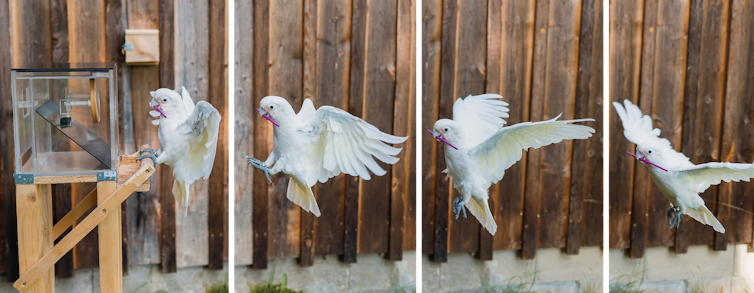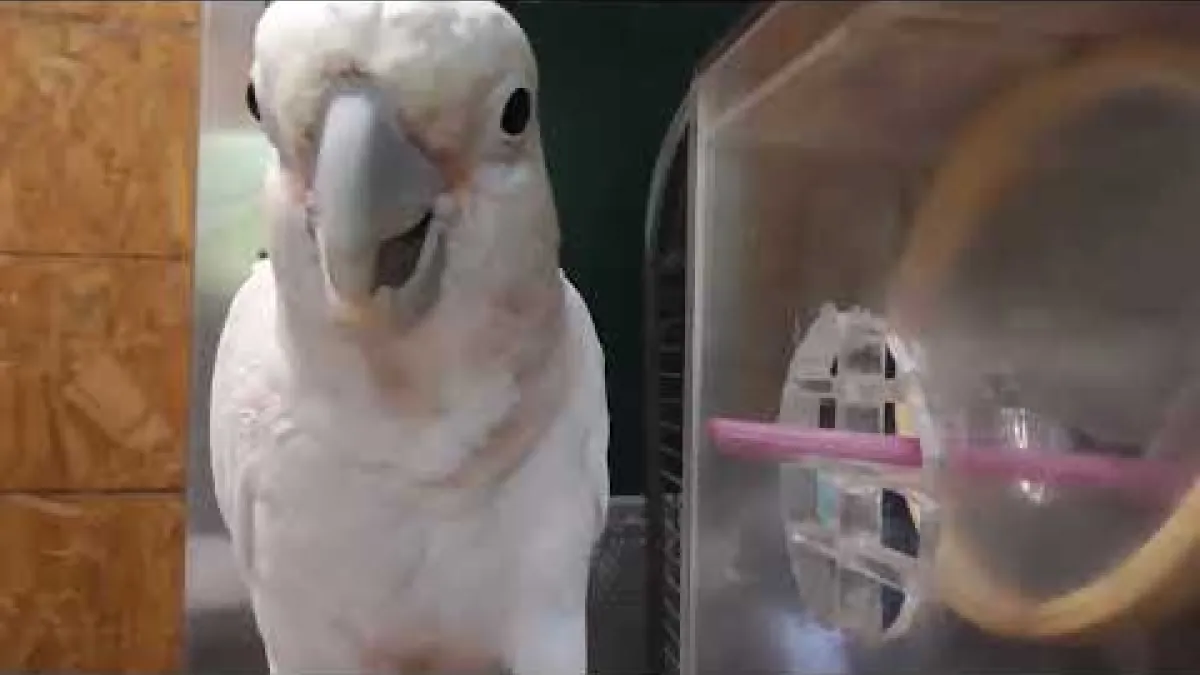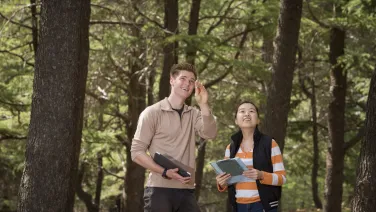Goffin’s cockatoo named third species that carries toolsets around in preparation for future tasks

From pocket knives to smart phones, humans keep inventing ever-more-sophisticated tools. However, the notion that tool use is an exclusively human trait was shattered in the 1960s when Jane Goodall observed our closest living relatives, chimpanzees, retrieving termites from holes with stripped twigs.
Tool use among non-human animals is hotly debated. It’s often thought a big brain is needed to understand the properties of objects, how to finely manipulate them, and how to teach this to other members of a species.
Until recently, humans and chimps stood out among tool-using species. They were considered the only species that used “toolsets”, wherein a collection of different tools is used to achieve a task. They were also thought to be the only animals that carried toolsets, in anticipation of needing them later.
A third species joined the exclusive club of toolset makers in 2021, when scientists in Indonesia saw wild Goffin’s cockatoos using three distinct types of tools to extract seeds from fruit. And in research published this week, researchers have shown Goffin’s cockatoos can also take the next leap of logic, by carrying a set of tools they’ll need for a future task.
Bright, enigmatic creatures
Parrots have proven to be something of an enigma. They’re known to be highly intelligent creatures, yet they’ve rarely been observed using tools in the wild.
Curiously, the only parrot species known to use tools regularly in the wild is Australia’s own palm cockatoo, which uses them in a very unusual way. Males in northern Australia “manufacture” drumsticks and seedpod tools to use during their complex mating displays. They grasp the drumstick or seedpod in the left foot and beat it against a hollow trunk in a rhythmic performance, with all the hallmarks of human instrumental music.
The 2021 study of wild Goffin’s cockatoos was particularly significant as it showed the birds’ tools were similar in complexity to those made by chimps, meaning their cognitive skills could be directly compared.
A small number of Goffin’s cockatoos were seen crafting a set of tools designed for three different purposes – wedging, cutting, and spooning – and using them sequentially to access seeds in fruits. This requires similar brain power to a chimp’s method of using multiple tools when fishing for termites.
Anticipating problems
An initial stumbling block in interpreting chimps’ use of toolsets was that nobody could show whether they visualised a collection of small tasks as one problem, or used single tools to solve separate problems.
Researchers finally solved this when they observed chimpanzees not only carrying their toolsets with them, but doing this flexibly and according to the exact problems they faced. They must have been thinking it through from start to finish!
This is precisely what Goffin’s cockatoos have now been shown to do (albeit in a captive setting). They’ve been confirmed as the third species that can not only use tools, but can carry toolsets in anticipation of needing them later on.

This panel of photos shows Figaro the cockatoo flying with two tools towards a box with a cashew. Thomas Suchanek, CC BY-NC-SA
Inspired by the toolsets chimpanzees use and transport in the wild for extracting termites from the ground, the authors of the study designed clever experiments to test Goffin’s cockatoos under similar circumstances.
The birds, initially ten in total, had to extract cashews from boxes that required either one or two tool types. They were tested in various ways to examine their flexibility and innovation, but the pièce de resistance came when reaching the box with the tools required additional movement, including climbing a ladder, and horizontal and vertical flight.
Though only five of the ten birds made it through the earlier experiments, four of those that did tended to transport both tools in one go, in anticipation of needing them to open the two-tool box. In other words, these birds could categorise both tools as a “toolset” and use it accordingly. Mission accomplished!
Nothing wrong with a bird brain
But what about needing a big brain for complex tasks?
Like primates, some bird species have enlarged forebrains that provide them enhanced cognitive abilities including insight and innovation, understanding of others’ mental states, symbolic communication, episodic memory and future planning.
Parrots are especially well endowed with these abilities, so we shouldn’t be surprised they can use toolsets as easily as chimpanzees. Rather, what’s surprising is that more parrots haven’t been seen transporting toolsets for future use.
One has to conclude it’s because wild parrots are rarely presented with problems that require this. Parrots have powerful feet and beaks that allow them to reach the most difficult places and break the hardest fruits and seeds. Yet bright individuals in captivity can spontaneously invent new tools to solve new problems – so there’s no doubting how capable they are.
This new study is further proof parrots belong in the animal world’s exclusive version of Mensa. Between the considered planning shown by Goffin’s cockatoos, and the palm cockatoo’s ability to play instruments, it seems we’ve only scratched the surface of what these remarkable birds can achieve.
Rob Heinsohn, Professor of Evolutionary and Conservation Biology, Australian National University
This article is republished from The Conversation under a Creative Commons license. Read the original article.




